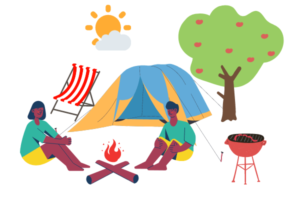In this comprehensive guide, we will cover everything you need to know about climbing Mount Kenya, including the best time to climb, the different routes available, the required permits, and the equipment you will need.
Mount Kenya, located in central Kenya, is the highest mountain in the country and the second-highest peak in Africa after Mount Kilimanjaro. It is a popular destination for hikers and mountaineers, attracting thousands of visitors each year.
If you’re a nature enthusiast or an adrenaline junkie, climbing Mount Kenya should definitely be on your bucket list. With its stunning scenery, diverse wildlife, and challenging climbs, Mount Kenya attracts thousands of visitors each year. In this comprehensive guide, we will cover everything you need to know about climbing Mount Kenya, from the best time to climb to the equipment you will need.
When is the best time to climb Mount Kenya?
The best time to climb Mount Kenya is during the dry seasons, which are from January to February and from August to September. During these months, the mountain is least likely to be covered in clouds, allowing you to fully appreciate the stunning views. However, the weather on the mountain can be unpredictable, so it’s important to be prepared for all conditions.
What are the different routes up Mount Kenya?
There are several routes to choose from when climbing Mount Kenya, each with its own unique features and difficulty level. Here are the main routes:
- Sirimon Route: This is the most popular and arguably the easiest route up the mountain. It starts from the Sirimon Gate and takes approximately three to four days to complete. The route has stunning views and abundant wildlife.
- Naromoru Route: This route starts from the Naromoru Gate and takes approximately two to three days to complete. It is steeper and more challenging than the Sirimon Route but offers spectacular views of the mountain.
- Chogoria Route: This route starts from the Chogoria Gate and takes approximately five to six days to complete. It is the longest route but is known for its stunning scenery and unique features such as the Gorges Valley and Lake Ellis.
- Timau Route: This is the least popular and most challenging route up the mountain. It is suitable only for experienced climbers and takes approximately five to six days to complete.
What are the peaks/summits on Mount Kenya?
Mount Kenya has two main peaks: Batian and Nelion, both of which are technical climbs that require advanced mountaineering skills. Batian is the highest peak on Mount Kenya and the second highest peak in Africa, standing at 5,199 meters (17,057 feet) above sea level. Nelion is slightly lower, standing at 5,188 meters (17,021 feet) above sea level. These two peaks are part of a group of peaks known as the “Big Five”, which also includes Point Lenana (4,985 meters), Point Piggott (4,957 meters), and Point John (4,883 meters). While these other three peaks are not technical climbs, they still offer a challenging climb with stunning views.
What permits do I need to climb Mount Kenya?
To climb Mount Kenya, you will need to pay park fees to the Kenya Wildlife Service (KWS). The entrance fees will vary depending on your nationality and the number of days you plan to climb.
Besides the park fees, you’ll be required to pay guide fees. However, if you are climbing Mount Kenya with a guided tour, you don’t have to worry yourself. The team will cater for all the logistics of the trip, leaving you to experience the mountain.
What are the Costs for Climbing Mount Kenya
Climbing Mount Kenya can be expensive, as climbers are required to pay park fees and hire a guide. The park fees vary depending on the route and the duration of the climb. It is recommended that climbers use a licensed guide, as they will be familiar with the terrain and can provide valuable guidance and support during the climb.
It costs about $1000 to climb Mount Kenya.
What equipment do I need to climb Mount Kenya?
Climbing Mount Kenya requires proper equipment and clothing. Here are the essential items you will need:
- Hiking boots: Choose boots that are comfortable and provide good support.
- Warm clothing: Temperatures on the mountain can drop to below freezing at night. Bring warm clothing such as jackets, sweaters, and thermal underwear.
- Sleeping bag: You will need a warm and comfortable sleeping bag.
- Tent: A good quality tent is essential for a comfortable night’s sleep.
- Backpack: Choose a backpack that is comfortable to carry and can hold all your gear.
- Water bottle: You will need to stay hydrated, so bring a water bottle or hydration system.
- Trekking poles: Trekking poles can provide support and reduce the strain on your legs.
- Headlamp: A headlamp is essential for navigating the mountain at night.
- Sunscreen: The sun can be intense, even on cloudy days. Bring sunscreen with a high SPF.
- First aid kit: Bring a basic first aid kit with essentials such as painkillers, bandages, and antiseptic.
What is the altitude of Mount Kenya?
The summit of Mount Kenya is 5,199 meters (17,057 feet) above sea level. Climbing to the summit (Batian) can be physically demanding, and requires technical skills. However, most climbers prefer going up to Lenana Peak which is 4,985 meters above sea level.
How long does it take to climb Mount Kenya?
The length of time it takes to climb Mount Kenya depends on the route and the individual’s fitness level. The Sirimon and Naromoru routes take about four to five days to complete, while the Chogoria and Timau routes take between five to six days.
Is climbing Mount Kenya safe?
Climbing Mount Kenya can be safe as long as you take the necessary precautions and follow the guidelines provided by the Kenya Wildlife Service. It’s important to have a trained guide with you at all times and to acclimatize properly to avoid altitude sickness. Additionally, you should be physically fit and have the appropriate equipment.
Can I climb Mount Kenya without a guide?
A trained guide is mandatory for all climbers on Mt. Kenya. Guides provide valuable information about the routes, weather, and wildlife, and ensure your safety throughout the climb. Hikemaniak, Moutain Rangers and Outdoorer are some of the best hiking companies in Kenya. They offer guided trips to mountain and hills in Kenya.
What wildlife can I see while climbing Mount Kenya?
Mount Kenya is home to a variety of wildlife, including elephants, buffalo, leopards, hyenas, and several species of primates. The most commonly sighted animals are the Colobus monkeys and Sykes monkeys.
What is the accommodation like on Mount Kenya?
Accommodation on Mount Kenya ranges from basic campsites to luxurious lodges. The Sirimon and Naromoru routes have more basic facilities such as huts and campsites, while the Chogoria route has more luxurious options such as the Chogoria Bandas and the Meru Mt. Kenya Lodge.
- Featured Photo: Mount Kenya from a distance by ALCOCK MULLER
In Conclusion
Climbing Mount Kenya is an unforgettable experience that offers stunning scenery, diverse wildlife, and challenging climbs. Before embarking on the climb, it’s important to choose the right route, obtain the necessary permits, and have the appropriate equipment. With the right preparation, climbing Mount Kenya can be a safe and rewarding adventure that you will never forget.
- Read Also: Top 10 Best Things to Do in Kenya




